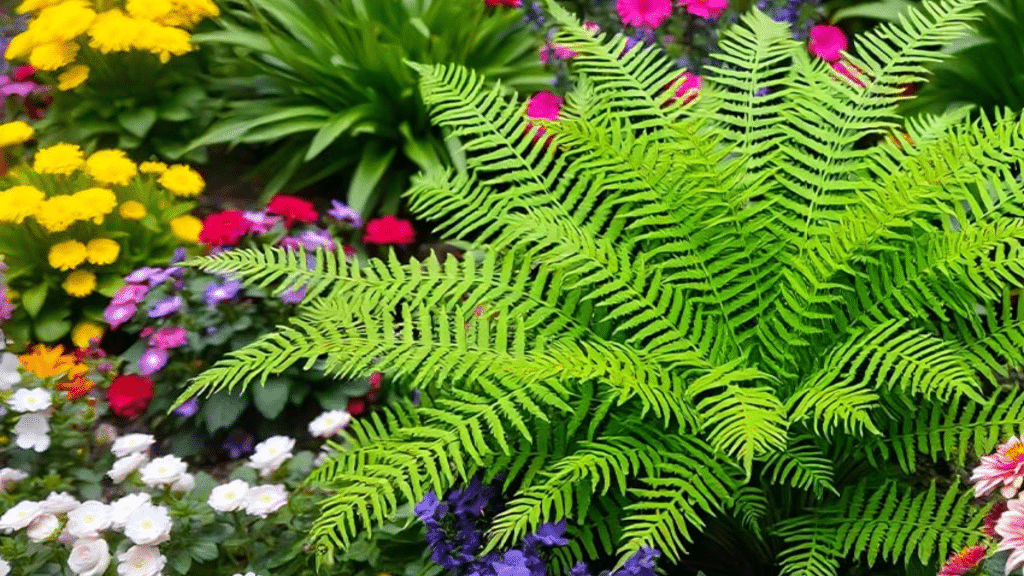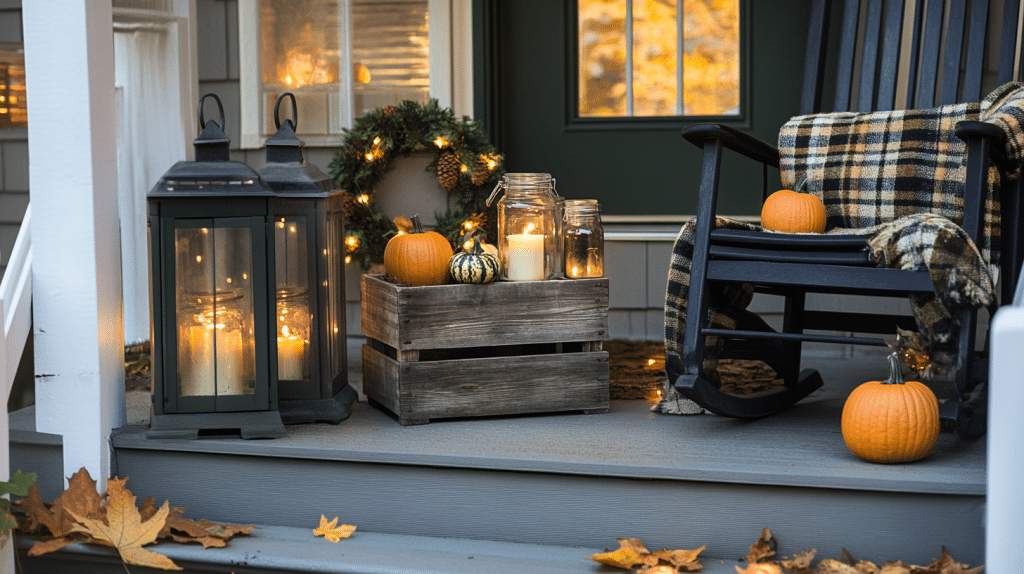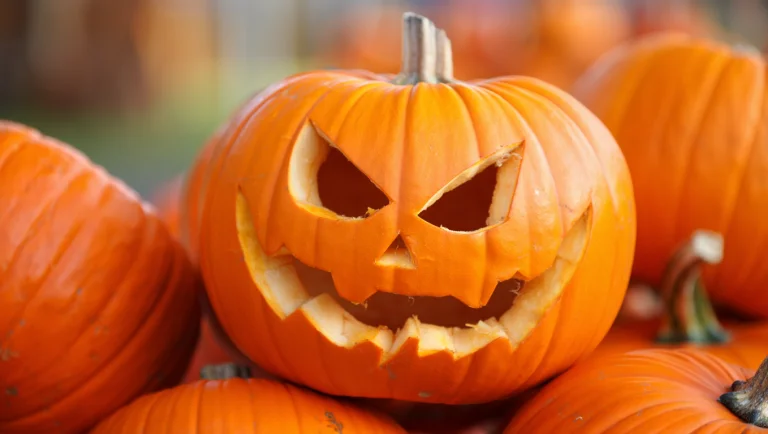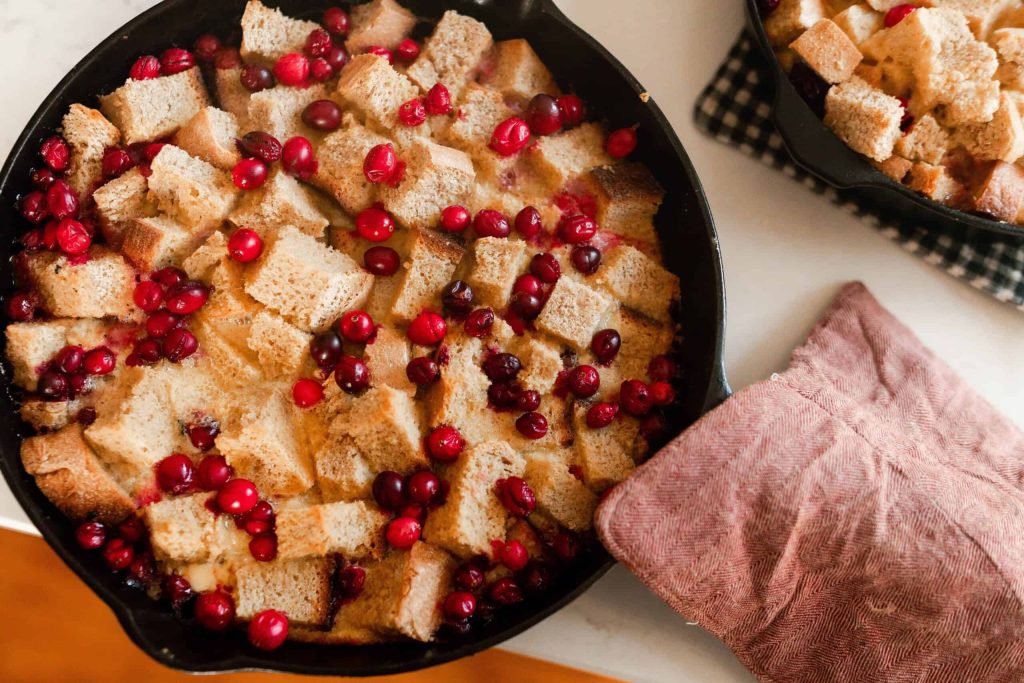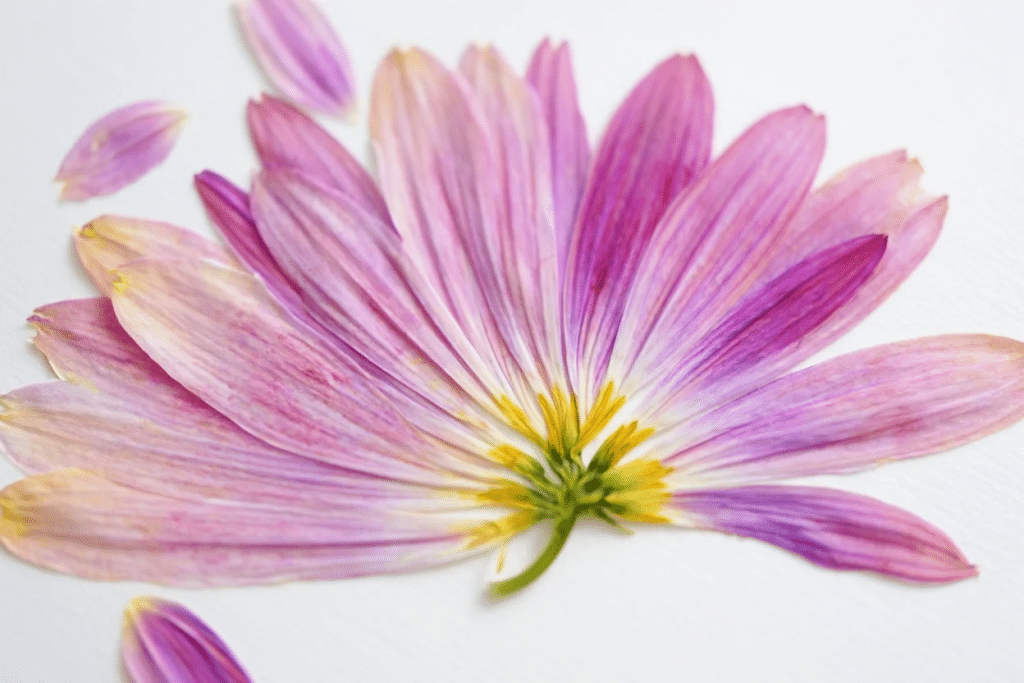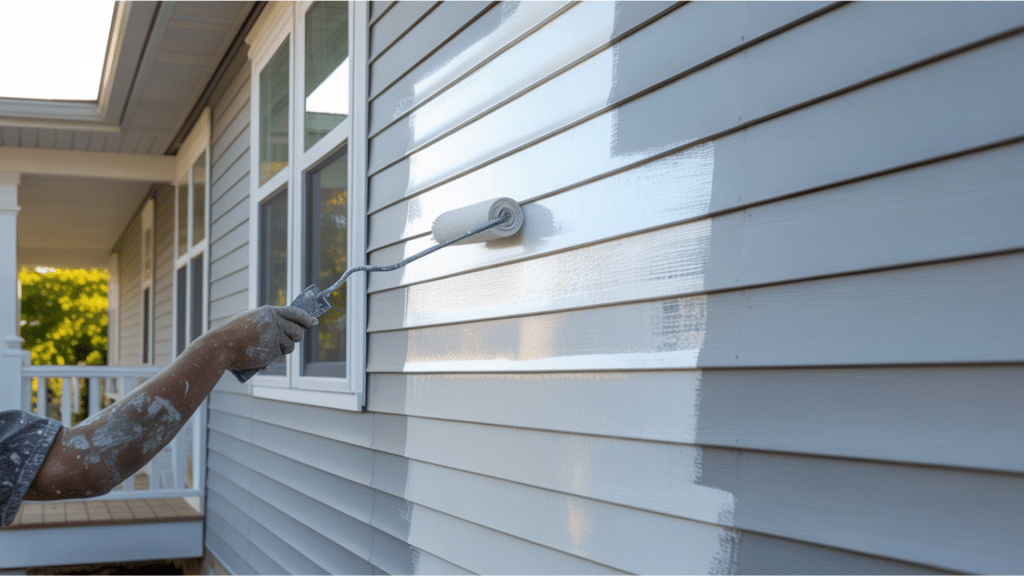Winter gardens often look bare and lifeless, and most plants die back or lose their foliage during colder months.
Find out how evergreen ferns can change your garden into a lush, colorful space that maintains its beauty throughout all seasons.
I’ll share my favorite varieties that have thrived in my garden, the benefits of ferns, and how to combine them with other plants for stunning year-round displays.
What are Evergreen Ferns?
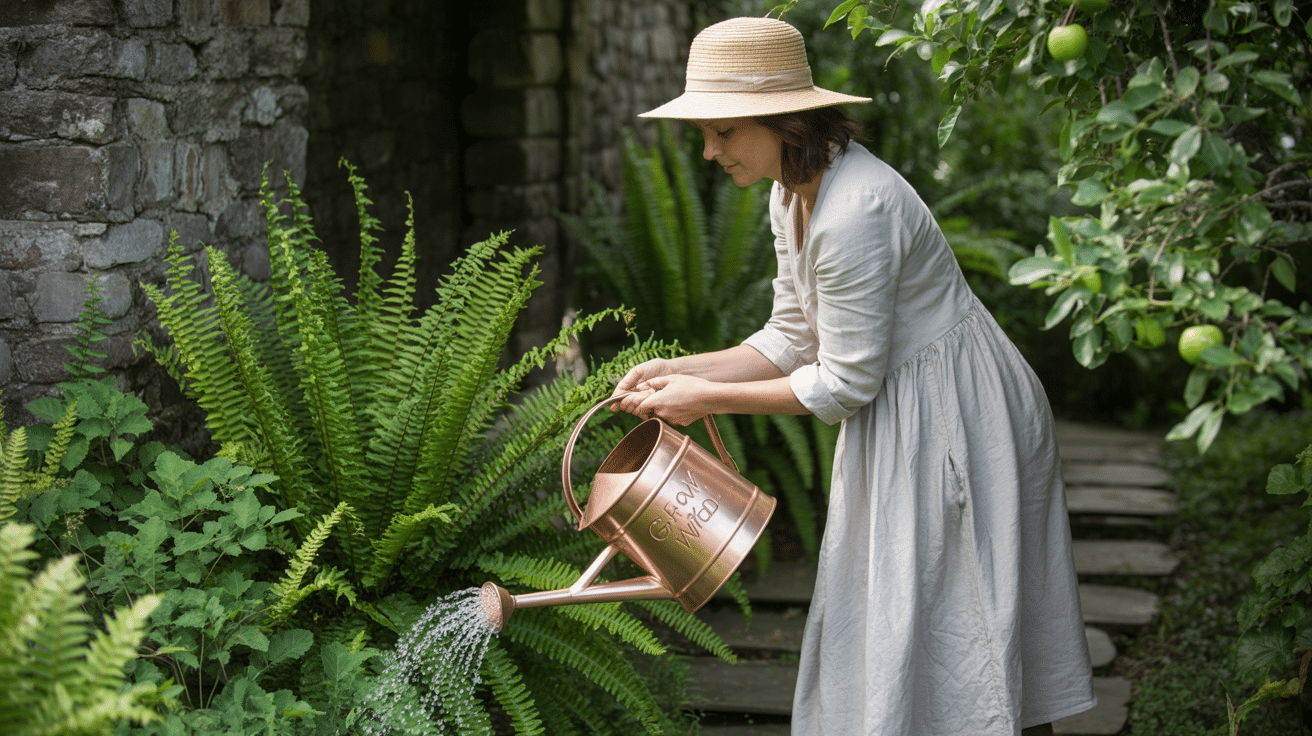
Evergreen ferns are my garden’s most reliable companions.
Unlike their deciduous cousins that die back in winter, these sturdy plants keep their fronds year-round, bringing constant texture and that gorgeous green when everything else has gone dormant.
I love how they range from tiny rock garden varieties to massive specimens that can anchor a shady corner. Some have glossy, leathery fronds while others showcase delicate, feathery textures.
They’re surprisingly tough. Many can handle drought once established and bounce back from snow without complaint.
Trust me, after that brutal winter we had last year, my Christmas ferns still looked amazing!
Benefits of Evergreen Ferns in Your Garden
I’ve been gardening for years, and have to say that evergreen ferns have become my secret weapon for solving tough spots. These resilient plants bring so much to the table with minimal fuss.
I started with just one variety, and now I can’t imagine my garden without them.
The following are the reasons why I think evergreen ferns deserve a spot in your garden:
- Year-round structure: They maintain their form and presence even when other perennials have disappeared for the season
- Low maintenance: Once established, most need minimal care beyond occasional watering during drought
- Deer resistance: Most deer pass them by, making them perfect for woodland gardens plagued by hungry visitors
- Erosion control: Their fibrous root systems help stabilize slopes and prevent soil runoff
- Shade tolerance: They thrive in spots where most flowering plants struggle to grow
- Bird habitat: The dense foliage provides shelter for birds during harsh weather
- Versatility: They work in containers, rock gardens, woodland settings, and even as houseplants
Top Evergreen Fern Varieties for Gardens
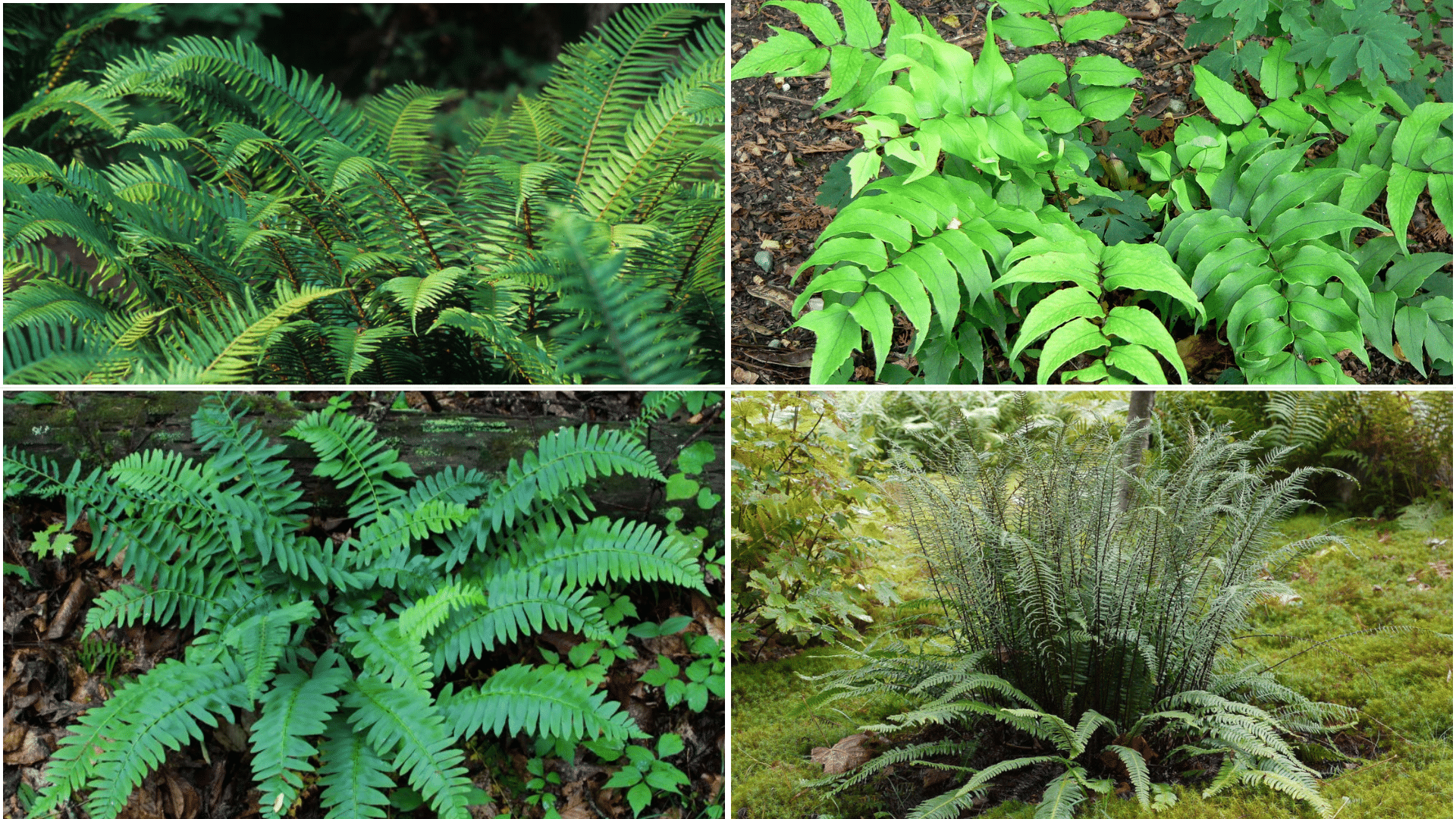
I’ve experimented with dozens of fern varieties over the years, learning which ones truly earn their keep through all four seasons.
The first evergreen fern I planted was a Christmas fern beside my front steps, and watching it stay colorful through snow and ice hooked me immediately.
The following are a few evergreen ferns suitable for your garden.
1. Christmas Fern (Polystichum acrostichoides)
My absolute go-to for tough situations. Christmas ferns have glossy, dark green fronds forming a beautiful vase-shaped clump about 2 feet tall. They’re native to eastern North America and incredibly resilient, handling both dry shade and occasional flooding.
I’ve seen mine survive being completely buried in snow without complaint. The young fiddleheads emerge covered in silvery scales, adding spring interest.
Their name comes from their traditional use as Christmas decorations.
2. Japanese Holly Fern (Cyrtomium falcatum)
These distinctive ferns feature uniquely shaped leaflets that genuinely resemble holly leaves, glossy, with slightly serrated edges. They create a bold architectural presence in shaded areas, growing 1-2 feet tall with an elegant arching habit.
I find they perform best in protected locations in colder climates. Their tropical appearance belies their surprising cold hardiness.
Mine survived temperatures down to 0°F when planted near a stone wall that provided some thermal mass.
3. Autumn Fern (Dryopteris erythrosora)
One of the most colorful evergreen ferns available. New fronds emerge coppery-red in spring, gradually transitioning to golden-green and finally deep green as they mature.
This color-changing performance continues sporadically throughout the growing season.
Growing 18-24 inches tall, autumn ferns prefer consistently moist, rich soil but adapt to average conditions once established. I have mine planted beside a path where morning light illuminates those gorgeous new fronds.
4. Hart’s Tongue Fern (Asplenium scolopendrium)
Completely unlike typical ferns, hart’s tongue features broad, undivided, strap-like fronds that create a bold textural contrast against more delicate plants. They form a tight rosette about 12-18 inches tall and particularly excel in alkaline soils, a rarity among ferns.
I’ve had success growing them in limestone-based soil where many other ferns struggle. Their unusual form makes them fantastic specimen plants in woodland gardens or shade containers.
5. Tassel Fern (Polystichum polyblepharum)
The most elegant fern in my collection, tassel ferns feature glossy, dark green fronds that arch gracefully outward from a central crown. New fronds unfurl with a distinctive “tassel” appearance that gives them their name.
Growing 18-24 inches tall and wide, they maintain an excellent winter appearance even after heavy snow. I find they’re slightly slower growing than other evergreens, but ultimately worth the wait. Their pristine foliage rarely shows damage.
6. Sword Fern (Polystichum munitum)
These Pacific Northwest natives are absolute workhorses in the shade garden, forming substantial clumps up to 4 feet tall with leathery, lance-shaped fronds. Once established, sword ferns demonstrate remarkable drought tolerance compared to most ferns.
I’ve placed them under mature trees where rainfall rarely penetrates, and they’ve thrived with minimal supplemental water.
Their size makes them perfect for creating living privacy screens in shaded borders.
7. Southern Shield Fern (Thelypteris kunthii)
Though technically semi-evergreen, shield ferns maintain their foliage through mild winters and quickly refresh damaged fronds in early spring. They spread slowly via short rhizomes to form graceful colonies 2-3 feet tall.
What impresses me most is their adaptability; they handle both periodic flooding and seasonal drought with equal resilience. I use them to fill difficult transition zones between wet and dry areas of my garden.
8. Deer Fern (Blechnum spicant)
A fascinating fern with two distinct frond types: flat, evergreen sterile fronds forming a groundhugging rosette, and upright, fertile fronds emerging from the center. Native to coastal forests, deer ferns prefer consistently moist, acidic soil and protected locations.
They typically grow 12-18 inches tall and spread slowly. In my woodland garden, they’ve formed a beautiful colony beneath rhododendrons where their unique growth habit creates natural layering.
9. Korean Rock Fern (Polystichum tsus-simense)
Perfect for small spaces, these compact ferns grow just 8-12 inches tall with intricately detailed, triangular fronds that maintain excellent form throughout winter.
Their diminutive size makes them ideal for rock gardens, containers, or front edges of shaded borders.
I’ve planted several along my garden steps where their delicate texture can be appreciated up close. They tolerate drier conditions than most ferns once established.
10. Licorice Fern (Polypodium glycyrrhizum)
Unlike most garden ferns, licorice ferns naturally grow on tree trunks and rocks rather than in soil. Their bright green, deeply lobed fronds emerge during fall rains and persist through winter, often going dormant during summer drought.
The rhizomes taste surprisingly like licorice (hence the name).
I’ve established mine on a mossy log in a shaded corner where they create a beautiful naturalistic effect that evokes Pacific Northwest forests.
11. Holly Fern (Polystichum lonchitis)
Extremely tough mountain natives, holly ferns feature stiff, narrow fronds with distinctly spiny leaflets that truly resemble holly.
Growing 12-18 inches tall, they tolerate colder and drier conditions than most evergreen ferns.
Their compact habit makes them perfect for rock gardens or exposed sites where other ferns might struggle. In my garden, they’ve thrived in a partially exposed north-facing slope where they receive minimal summer irrigation.
Tips on Maintaining Ferns in Your Garden
I used to think ferns were fussy plants that required special care, but after years of growing them, I’ve found out they’re quite forgiving.
The key is understanding their basic needs and giving them a good start. Once established, most of my evergreen ferns practically take care of themselves, even through challenging weather conditions.
- Water deeply but infrequently: Most ferns prefer consistently moist soil but hate soggy conditions; aim for weekly deep watering rather than daily sprinkles
- Mulch generously: A 2-3 inch layer of leaf mold or pine straw mimics their natural forest floor environment and maintains soil moisture
- Avoid disturbing roots: Ferns dislike being moved or divided; when necessary, handle with extreme care and keep as much soil around roots as possible
- Feed lightly: An annual application of compost or slow-release organic fertilizer in spring is sufficient; avoid harsh chemical fertilizers
- Provide wind protection: Strong winds can damage delicate fronds; plant in sheltered locations or among sturdier companions
- Clean selectively: Remove only clearly dead or damaged fronds; many evergreen ferns naturally shed older fronds as new ones emerge
- Be patient: Most ferns grow relatively slowly in their first few years, but become increasingly vigorous once established; resist the urge to overwater or overfertilize
Wrapping It Up
My Christmas ferns have weathered blizzards, my autumn ferns provide constant color changes, and my tiny Korean rock ferns add intricate detail along pathways.
What strikes me most isn’t just their practicality, it’s how they connect my garden to something ancient and enduring.
When everything else retreats, these prehistoric plants remain, whispering of forests that existed long before us.
I encourage you to find space for at least one evergreen fern variety. Start small if you’re unsure. I promise that the first winter glimpse of green persistence will have you planning where to plant more.


